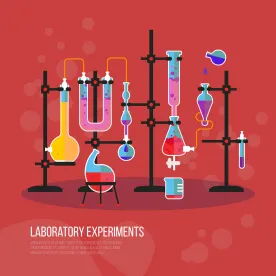On December 6, 2017, the U.S. Environmental Protection Agency’s (EPA) Office of Pollution Prevention and Toxics (OPPT) convened a much anticipated public meeting on implementing changes to the new chemicals review program under the amended Toxic Substances Control Act (TSCA). EPA offered brief prepared remarks and previously solicited questions from stakeholders. Stakeholders expressed their appreciation to EPA for developing the draft Points to Consider and related documents made available in advance of the meeting, and for OPPT’s continuing interest on new chemical issues. For more information, see our blog “EPA Posts Agenda and Other Meeting Materials for December 6, 2017, New Chemicals Review Program Implementation Meeting.” Below are some key takeaways regarding the meeting as related to EPA’s presentations and input from industry and non-governmental organizations (NGO).
Conditions of Use, SNURs, and PMNs: EPA stated that one of its main concerns is when EPA does not identify unreasonable risk for intended use, but nonetheless has concerns with reasonably foreseen conditions of use. EPA stated that it will assess whether those concerns can be addressed through significant new use rules (SNUR) that it would promulgate prior to making its Section 5 finding. EPA stated that, in identifying reasonably foreseeable uses, it will rely on knowledge, experience, and facts to support what is foreseen, not simply what is possible. Several commenters requested clarification and examples on the information that will support such identifications. This is plainly an area of intense interest and on which EPA pledged to clarify.
EPA confirmed that the SNUR would mirror the premanufacture notice (PMN) in a way that would clearly state what deviations would be permitted to ensure protections for portions of the PMN about which EPA had identified concerns. In response to a direct question, Jeff Morris, Ph.D., OPPT Director, confirmed that he personally is looking at each new chemical notification decision to ensure a consistent and coherent approach to chemical reviews. Dr. Morris assured stakeholders that his engagement would not slow down the PMN review process.
NGO groups, that were ably represented at the meeting, expressed disappointment that they were not a part of the pilot testing component of the new chemicals Points to Consider document. OPPT clarified that the purpose of the pilot was to have parties who are actually preparing PMNs pilot use of the document while preparing PMNs and that as a result, non-PMN submitters were not a part of the pilot. Following a request from several NGOs, EPA stated that it would of course make the original and redline versions of the Points to Consider document publicly available to ensure full transparency. Several NGOs also voiced concern with the delay of EPA getting PMN information posted online. Commenters noted the need for access to more content related to the new chemicals review, such as detailed PMN determinations, as the determinations that are publicly available at this point are boilerplate. Interestingly, concerns were expressed on issues not germane to the workshop, such as existing and accidental releases of chemicals (not related to TSCA).
Of the parties that weighed in on the issue, industry representatives who addressed the issue were supportive of using SNURs to cover reasonably foreseeable conditions of use that are not reflected in the submitted PMNs. Some NGOs were supportive of the use of SNURs to reduce consent orders, while others stated that SNURs are not an adequate substitute for consent orders and that Congress intended for Section 5(e) orders to come first and to trigger SNURs. The concern over the use of SNURs rather than consent orders may relate to a concern of chemicals being introduced prior to the SNUR being published in final. Industry representatives also suggested that EPA seek to scale its information needs appropriately. For instance, less detailed exposure information should be required for EPA to determine that it has sufficient information on a low hazard chemical. Similarly, EPA should adjust the hazard profile requirements for a chemical with low exposure.
Chemical Categories: EPA reviewed the ongoing effort to develop four new chemical categories that could be used in future new chemical reviews. These are:
- Lung Effects Categories: Polycationic substances (cationic binding); general surfactants; waterproofing agents; and insoluble polymer lung overload;
- Photo-Acid Generators (PAG) Category;
- Tracer Chemical; and
- Perfluorinated Chemicals.
EPA asked for input and ideas on how to move forward with chemical categories -- either by updating existing categories or reviewing internal data to identify new categories -- and how the information should be presented (e.g., to publish separately or together in one document).
OSHA Focus: On behalf of the TSCA New Chemicals Coalition (TSCA NCC), Richard E. Engler, Ph.D., Bergeson & Campbell, P.C., provided comments that included feedback to EPA that it needs to develop a consultation process with the U.S. Occupational Safety and Health Administration (OSHA) per the Section 5(f) legislative language. Dr. Engler suggested that EPA’s assessments could be communicated to submitters and OSHA to inform both on the endpoints of concern and EPA’s assessments of safe exposure limits. In this way, employers are obligated under the Occupational Safety and Health Act to assess hazards and exposures, provide information to workers, and ensure that exposures are controlled under OSHA’s authority, thereby satisfying EPA’s obligation to regulate “to the extent necessary” to protect such workers.
Sustainable Futures Program: EPA asked for input as to whether it should continue the Sustainable Futures Program. Some commenters supported the Sustainable Futures Program; no commenters spoke against it.
The presentations from the meeting are listed below and available online:
- New Chemical Review under Amended TSCA -- Jeff Morris, Ph.D., Office of Pollution Prevention and Toxics
- Points to Consider (PtC) When Preparing TSCA New Chemical Notifications -- David A. Tobias, Ph.D., Risk Assessment Division, Office of Pollution Prevention and Toxics
- New Chemicals Decision Guidelines Manual Detailed Outline
- Chemical Categories -- Tala R. Henry, Ph.D., Director, Risk Assessment Division, Office of Pollution Prevention and Toxics
- Other Advance Questions -- Tanya Hodge Mottley, Acting Deputy Director of Programs, Office of Pollution Prevention and Toxics
EPA’s next public meeting on TSCA’s implementation of Existing Chemicals Prioritization is coming up on December 11, 2017. More information on this upcoming meeting is available on our blog under key phrase public meeting.




 />i
/>i
